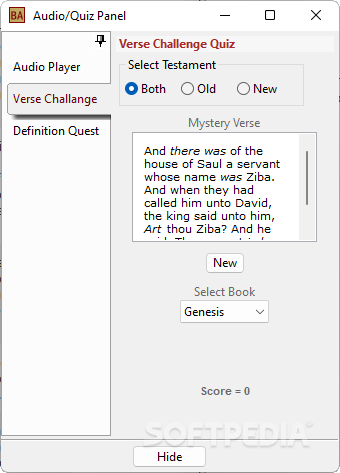

The default regexes directory path can be changed like this: DeviceDetectorSettings.RegexesDirectory = What Device Detector is able to detect do not do anything if a bot is detected Parse() will then return true instead of information If you aim to check if a given useragent is a bot and don't require any of the other information, you can directly use the bot parser.
Bible analyzer mobile full#
Instead of using the full power of DeviceDetector it might in some cases be better to use only specific parsers. Var clientInfo = dd.GetClient() // holds information about browser, feed reader, media player. OPTIONAL: If called, bot detection will completely be skipped (bots will be detected as regular devices then) OPTIONAL: If called, GetBot() will only return true if a bot was detected (speeds up detection a bit)

To cache across requests use caching in files or memcache By default static cache is used, which works best within one php process (memory array caching) Var clientHints = ClientHints.Factory(headers) // client hints are optional for other options see VERSION_TRUNCATION_* constants in DeviceParserAbstract classĭeviceDetector.SetVersionTruncation(VersionTruncation.VERSION_TRUNCATION_NONE) Īr userAgent = Request.Headers // change this to the useragent you want to parse

By default only minor versions will be returned (e.g. OPTIONAL: Set version truncation to none, so full versions will be returned
Bible analyzer mobile code#
And use some code like this one: using DeviceDetectorNET Just add DeviceDetector.NET to your projects requirements. Using DeviceDetector.NET with nuget is quite easy. For the most part you can just follow the documentation for device-detector with no issue. This is a port of the popular PHP device-detector library to C#. NET that parses User Agents and detects devices (desktop, tablet, mobile, tv, cars, console, etc.), clients (browsers, feed readers, media players, PIMs. The Universal Device Detection library for.


 0 kommentar(er)
0 kommentar(er)
